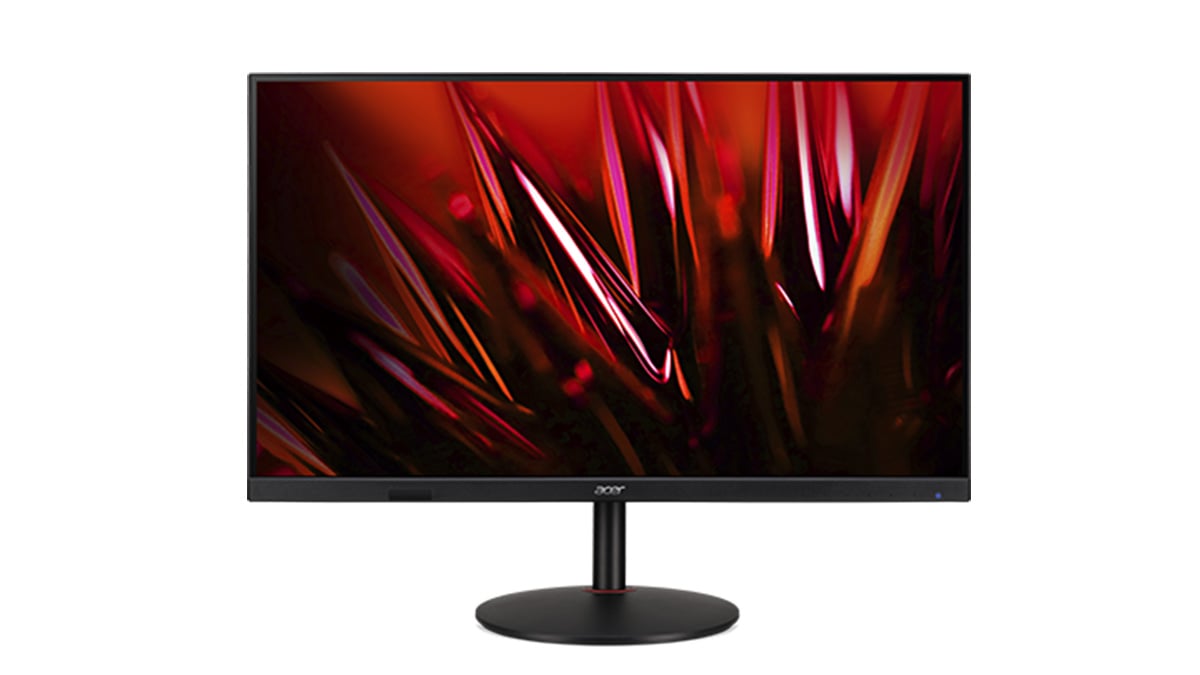How to Choose the Right Gaming Monitor?
Choosing the right gaming monitor is an important decision that will impact your gaming experience. Although it can be time-consuming and sometimes difficult, understanding the technical aspects of a gaming monitor and your personal preferences is crucial.
What is a gaming monitor?
A gaming monitor is a specialized type of computer monitor designed for gamers. They are optimized for fast-paced action and deliver better color accuracy, contrast, and refresh rates. They often have adjustable stands and ergonomic designs that promote comfort for long sessions. Mostly, a gaming monitor is essential for any serious gamer as it enhances the gaming experience with crisp visuals and smooth gameplay.
What to consider before buying a gaming monitor
Basic gaming monitor preferences
- Budget: Monitor prices can vary widely depending on the display technology and features. While there is a range of budget options and features play an important part in determining prices, typically monitors can be categorized as low ($75 - 150), mid-range ($150 - 400), and high ($400+) budget.
- Display size: Larger monitors are generally better for gaming because they offer a more immersive experience, but are usually more expensive. The most popular monitor sizes are between 24 and 32 inches. Smaller displays offer portability and space-saving, while bigger displays help enhance the gaming experience.
- Graphics processing unit (GPU): The capabilities of your GPU are a major consideration. Whether the GPU has DisplayPort, can handle multiple monitors, or is powerful enough to support the monitor’s resolution and response rate is crucial.
- Viewing angle: Some displays have limited viewing angles, leading to poor visibility when viewed at a certain angle.
Display technologies for gaming monitors
Different types of display technologies can impact your gaming experience and need to be considered when planning your setup.
- LCD (Liquid Crystal Display): Monitors that use liquid crystals to control the amount of light that passes through the screen. The advantages of LCD monitors are their price and panel options.
- LED (Light Emitting Diode): A type of LCD that uses LEDs to backlight the screen. This technology offers high brightness and contrast levels, making it well-suited for gaming in brightly lit environments and an upgrade from other types of LCDs.
- OLED (Organic Light Emitting Diode): Displays that use organic compounds that emit light when an electric current is applied. This allows for high-quality black levels, high contrast ratios, and vibrant colors. Although the picture quality is the major upgrade over LEDs, they can suffer from burn-in over time if static images are displayed for extended periods.
- QLED (Quantum Light Emitting Diode): Technology that uses tiny particles that absorb light and re-emit it at a specific wavelength. These displays offer upgraded brightness and color depth over traditional LCDs and OLEDs.
Resolution options and their impact
Higher resolutions provide sharper and more detailed visuals to improve the gaming experience.
- Full HD (1920x1080): The most common resolution for gaming monitors. Expect sharp and clear images with good detail, which makes for a great option for budget-conscious gamers or those who don't have powerful graphics cards. However, it’s important to note that some gamers may find that Full HD doesn't offer enough detail.
- Wide Quad HD (2560x1440): A type of display resolution that offers four times the resolution of 720p HD. Look forward to more screen real estate and sharper images than Full HD displays for a reasonable price.
- 4K (3840x2160): 4K has four times as many pixels as Full HD, which results in incredibly detailed visuals. Keep in mind that these monitors require a powerful graphics card to run games smoothly at this high resolution, which can be expensive.
- Ultra-wide (2560x1080 or 3440x1440): Monitors that have a wider aspect ratio than traditional monitors. This allows for more screen real estate and greater game immersion. The wider field of view can enhance games with beautiful landscapes or racing simulations. However, some games may not support ultra-wide resolutions natively without stretching the image.
Refresh rate and response time
Refresh rate describes the number of times per second that the screen is refreshed, which is measured in Hertz (Hz). Higher refresh rates describe if the screen can display more frames per second, which results in smoother motion and less motion blur. Gaming monitors have refresh rates of 60Hz or higher, and some offer up to 500Hz. It’s also important to consider if your refresh rates match if using multiple monitors, as you may notice that your GPU runs hotter, has load issues, or that the monitor with the higher refresh rate downgrades to the lower refresh rate.
Response time is measured in milliseconds (ms) and represents how quickly a pixel can change colors. Lower numbers represent faster response times and provide less ghosting and motion blur. This is advantageous for fast-paced games where quick movements can cause blurring or smearing. Gaming monitors typically have response times of 1 ms or lower, which is generally enough for most games.
Gsync vs FreeSync
Technologies that help eliminate screen tearing and stuttering. FreeSync is a technology from AMD, while G-Sync is a technology developed by Nvidia. They work by synchronizing a monitor's refresh rate with the game's frame rate. These ensure each frame is displayed without any tearing or stuttering, which results in smoother gameplay.
The choice between FreeSync or G-Sync is best for a given gaming setup depends on the graphics card, the monitor's capabilities, and personal preferences. FreeSync tends is usually more affordable and compatible with a wider range of monitors which makes it a good choice for gamers on a budget. G-Sync tends to offer better performance and compatibility with higher-end monitors.
Gaming monitor recommendations
It's important to note that if you're considering purchasing a higher resolution monitor like 4K, your GPU is powerful enough to support it. Otherwise, you may not see much of an improvement in visual quality over lower-resolution options. When choosing a gaming monitor, prioritize your needs and budget. Don't splurge on high-end features that your current GPU might not be able to handle. Instead, look for an affordable option and good value for money based on your specific requirements.
Budget option ($75 - 150): If you're on a tight budget or a casual gamer, a Full HD LCD or LED monitor with a 60Hz or 75Hz refresh rate can be a great option. Monitors such as the 27" AOPEN Gaming Monitor can be found on the lower end of the price scale, don’t require an advanced GPU, and provide decent image quality and smoothness
Mid-range option ($150 - 400): For gamers who want a bit more performance without breaking the bank, a 144Hz Full HD, Wide Quad LED, or OLED monitor is a great choice. Monitors such as the 27" AOPEN HC5 Curved Gaming Monitor produce smoother visuals and faster response times than standard 60Hz monitors while still being affordable.
High-end option ($400+): If you have the budget and want the best possible gaming experience, a 4K, ultra-wide OLED, or QLED monitor with at least a 144Hz refresh rate such as the 31.5" Nitro XV2 Gaming Monitor might be a fit. Just make sure your GPU is up to the task, or you’re willing to purchase one that can handle the workload.














